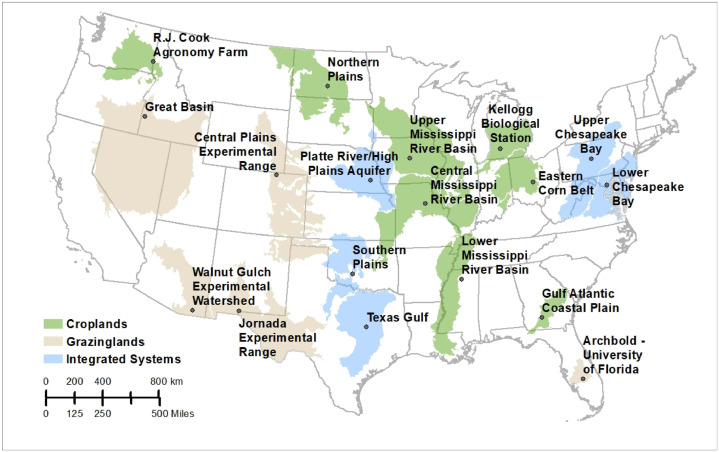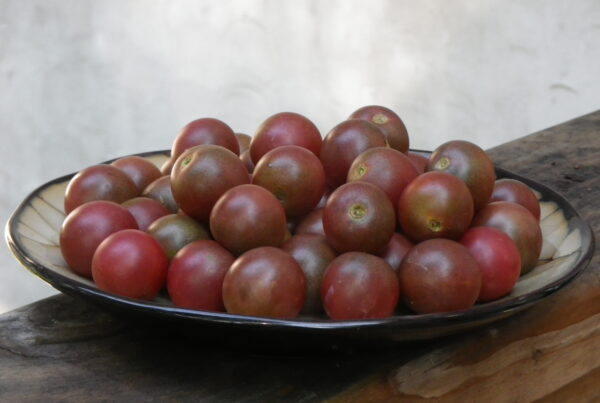Long-term Agroecological Research Showcases New Innovations for Resilient Agriculture

Many may not be aware that the United States Department of Agriculture (USDA)’s Long-Term Agroecological Research (LTAR) network, managed by the Agricultural Research Service (ARS), works to address a range of regional and national agricultural challenges. Created in 2012, this one-of-a-kind network of 18 research sites across the country engages producers and other stakeholders in the development, design, and implementation of research innovation that has helped improve the long-term productivity and prosperity of agricultural communities.
Last month the National Sustainable Agriculture Coalition (NSAC) along with the American Institute of Biological Sciences (AIBS), and the Society for Range Management, co-sponsored a virtual briefing to feature the ground-breaking research of LTAR scientists. The LTAR network, which features a range of major agricultural systems including row crops, rangelands, and integrated crop and animal systems, helps farmers and ranchers overcome productivity challenges while improving environmental stewardship. Its work focuses on improving agricultural sustainability by finding solutions to improve productivity, increase rural prosperity, and support ecosystem services, soil health, biodiversity, and water quality. Read More
NSAC Responds to House Passage of FY 2023 Agriculture Spending Bill
“The National Sustainable Agriculture Coalition (NSAC) applauds the House Appropriations Committee members for voting to support robust funding for Conservation Operations and a significant increase in Conservation Technical Assistance that farmers and ranchers need to adopt new conservation practices that improve the sustainability and profitability of their family farms.”
“We hope that when the Senate considers appropriations later this year, they choose to increase funding for research programs that are essential, to help farmers meet the challenge of climate change-induced severe weather. Most importantly, including full funding for the Sustainable Agriculture Research and Education (SARE) program at $60 million and increases to the Organic Transitions Program (ORG) and the Grazing Lands Conservation Initiative (GLCI).”
How Do Working Lands Conservation Programs Shape Cover Crop Adoption?
A recent study led by the American Soybean Association (ASA) claims to demonstrate the differing value of two agricultural working lands conservation programs and their ability to create increased adoption of cover crops. The National Sustainable Agriculture Coalition (NSAC) takes issue with several aspects of the study.
First, the study makes a problematic assumption. It assumes there is a clear relationship between overall conservation program payment data (obligations, financial assistance, and technical assistance) and adoption of cover crops. Second, we question the assumption that sheer increases in acreage of cover crops adequately provide the needed conservation gains. Agronomic science on cover crops suggests that only high quality, permanent cover generates important conservation benefits–particularly for climate–that we are seeking to gain from cover crops. This second problem suggests the need for longer term contracts and support to enable farmers to adopt more complex systems with ground permanently covered. Third, key details of the ways in which the Environmental Quality Incentives Program (EQIP) and Conservation Stewardship Program (CSP) actually function are misrepresented in the article and deeply matter to how they influence conservation adoption. Fourth, historic trends in cover crop adoption shown in OpTIS satellite data contradict the study’s conclusion that EQIP creates additional adoption of cover crops. Finally, CSP by design can already buy us multiple years of cover crop adoption.
The two working lands conservation programs in question–the Environmental Quality Incentives Program (EQIP) and the Conservation Stewardship Program (CSP)–each support a wide range of conservation practices. Both support the adoption of cover crops, but only as one among many practices geared toward improving on-farm conservation. Read More
USDA Announces Framework for Shoring Up the Food Supply Chain and Transforming the Food System to Be Fairer, More Competitive, More Resilient
USDA efforts to create more and better markets will benefit both producers and American consumers through fairer prices, as well as address longstanding issues intensified by pandemic.






